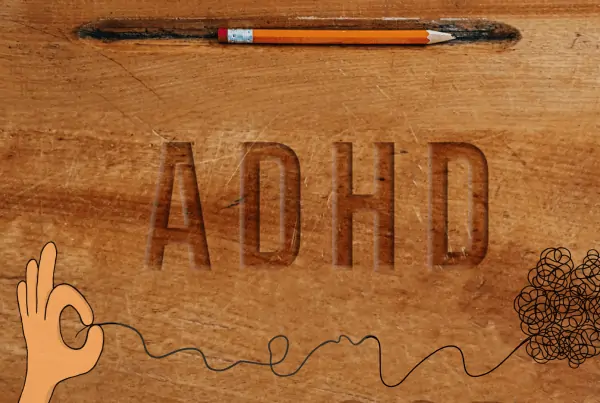Teen vaping has quickly overtaken cigarettes and most other forms of adolescent drug use, including alcohol. Yet while vaping has long been promoted as a potentially healthier alternative to traditional smoking, more and more evidence is coming to light detailing how vaping has serious adverse health effects, including lung disease and cancer. Watch out for sweet odors, unusual gadgets, and increased thirst or nosebleeds.
Vaping, whether nicotine or cannabis, is a form of substance use that poses significant health risks, particularly for teens whose developing brains are susceptible to the addictive properties of these substances.
If unnoticed, this habit can escalate into a pattern of substance abuse, requiring teen marijuana abuse treatment and potentially leading to long-term health and behavioral issues.
Recognizing the signs that your teen is engaging in vaping is essential for early intervention and preventing more severe consequences.
This article explores how to tell if your teen is vaping
How to Tell If Your Teen Is Vaping
As a parent, being able to identify whether your teen is vaping is critical to addressing and potentially curtailing the habit early. Vaping devices are often discreet and can be mistaken for everyday items like USB drives or pens, making them easy to conceal.
Teens might also be drawn to vaping due to peer pressure, curiosity, or the allure of flavored vapors, despite the risks associated with nicotine and cannabis inhalation. Understanding the context and the tools teens might use is crucial in guiding how you approach the conversation about vaping.
Recognizing the importance of being vigilant and informed can empower you to initiate open, supportive discussions with your teen about their habits and health. This is important because vaping can escalate to more dangerous behaviors requiring teen substance use treatment.
Here’s how to tell if your teen is vaping:
Recognizing Vaping Devices: Pens, Pods, and Mods
A beginner’s guide to vaping devices can help parents and loved ones better recognize what a vape pen might look like. Vaping devices, or vapes, are electronic devices consisting of a container for e-liquid, a cotton wick, and a mechanism for heating the wick.
The heated wick turns the contents of the e-liquid container into an inhalant. E-liquids commonly comprise vegetable glycerin (VG), propylene glycol (PG), and additives, including flavoring, aroma, and nicotine. PG carries the additives, while VG controls the thickness and consistency of the vaping liquid and its resulting vapor.
Most vapes are cylindrical or shaped like tabs, and they must be large enough to contain an electronic heating element (and battery) and e-liquid. Some vapes are disposable, but most are designed to be reused often.
Unusual Odors: Sweet, fruity, or skunk-like smells
One of the big selling points for vapes over cigarettes is the lack of tobacco smell. Instead, vaping liquids utilize a wide range of additive aromas and flavorings to appeal to customers of any and every demographic, including younger teens. This controversy sparked a major lawsuit in the US.
As such, vaping liquids can smell like strawberries, freshly baked cookies, or even smoked meats. Most e-liquids are sweet and fruity. Marijuana-based vaping products will smell like marijuana, however – a more robust, musky, almost skunk-like scent depending on the intensity of the product.
Physical Symptoms: Thirst, nosebleeds, and red eyes
Most of the long-term consequences of vaping take a few years to emerge, but there are some short-term consequences, especially among teens.
These range from changes in attention and behavior to physical symptoms, such as increased thirst, dry coughing or wheezing, a long-term scent on a teen’s breath and clothes, increased risk of nosebleeds (in heavy use cases), and reddened eyes from the consumption of marijuana.
Behavioral Changes: Secrecy, mood swings, and new friends
Most teens who vape won’t stick to the zero-nicotine liquids. They’re more likely to start using nicotine through vaping, rather than using a vape to quit a pre-existing smoking problem.
As a result, teens who vape are more likely to experience the effects of nicotine addiction, including irritability, mood swings, heightened anxiety, and a tendency to hide their new hobby (as e-cigarettes and vapes are illegal for underage users).
Tips for Talking with Your Teen About Vaping
Vaping is dangerous, especially for teens. Most forms of vaping are addictive, and the long-term health consequences of vaping are likely severe, including an increased risk of lung cancer.
However, when discussing vaping with your teen, it’s essential to focus on maintaining a non-judgmental attitude to encourage honest communication and avoid pushing your teen into becoming verbally defensive.
Start the conversation by expressing your concern for their health and well-being and listening actively to their perspective. Avoid judgmental language or putting your teen down for their choices. It’s normal for teens to act in ways that might not always be in their best interest, to fit it, be cool, or try something new.
Stick to the facts. Learn more about the health issues surrounding vaping, and provide accurate information about the risks and downsides, emphasizing the potential long-term consequences. Talk to your teen about alternative coping mechanisms for stress or peer pressure. Remember to set clear boundaries and consequences for continued vaping while offering your support and understanding.
Seeking Professional Help
A vaping habit can be tough to beat, especially when your teen is a heavy vaper.
If your teen is struggling to quit vaping on their own, then consider talking to them about substance use treatment.
Seeing a professional can not only help your teen quit vaping but help them find other ways to cope with their stressors, including better managing their stress at school and figuring out how to deal with peer pressure.
Teen Substance Abuse Treatment
Are you concerned about your teen’s vaping habits? Visions Adolescent Treatment Centers offers comprehensive substance abuse treatment programs tailored specifically for teens.
Our evidence-based approach addresses the underlying issues driving teen vaping, including potential co-occurring mental health challenges.
We at Visions provide practical strategies for recovery and long-term wellness. Contact us today to learn how we can help your teen lead a happier life.
Conclusion
Despite being marketed as a safer alternative, emerging evidence highlights serious health risks associated with vaping, including lung disease and cancer.
Parents should be vigilant for telltale signs of teen vaping, such as sweet odors, unfamiliar devices, and physical symptoms like increased thirst or a dry cough. If your teen is struggling with an addiction to vaping, then consider talking to them about getting professional help.









